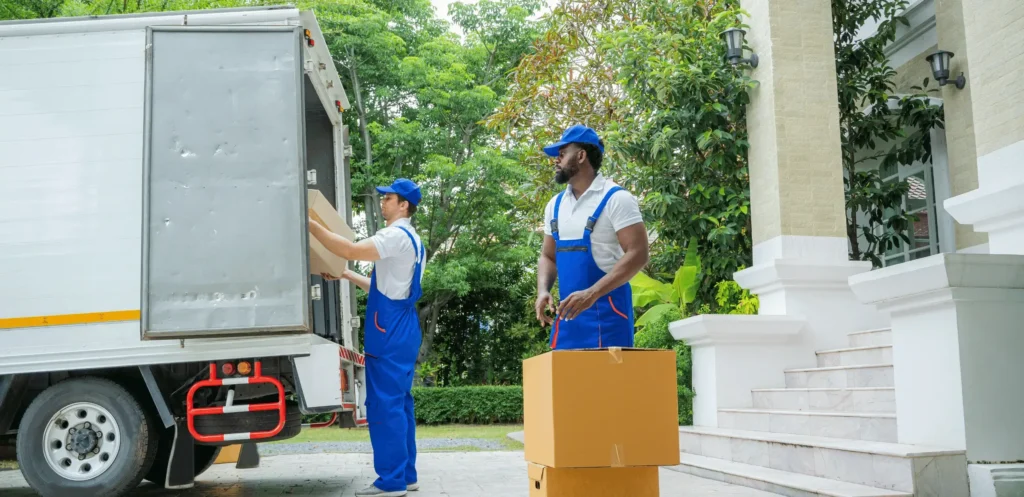When goods are exported to another country by ocean, air, or land Cargo packaging plays a vital role in ensuring the safe and secure transportation of goods across various modes. Whether it’s by land, sea, or air, choosing the right packaging is crucial for safeguarding of international shipments. Choosing the best cargo packaging requires a lot of research and experience. Without the help of a reputable shipping company, your merchandise may arrive damaged, rotten, or in unacceptable condition. If you want to ship your cargo seamlessly, read this article to learn more about the different types of cargo packaging, and contact us to get more help and advice. Let’s delve deeper into cargo packaging and explore 10 types that stand out for their effectiveness in safe transportation.Contact us for further assistance and advice.
I. Introduction
Cargo packaging, in simple terms, refers to the method of packing and securing goods or materials for transportation. During transportation, the goods are unstable in containers, trucks, cargo, or any other transport, which increases the chances of the goods getting damaged and becoming useless, keeping this problem in mind, it was decided to pack the goods so that it does not get spoiled and remains safe, which includes seaworthy vacuum packing, wooden box packing and many other packings which we will discuss in depth below.
History of Cargo Packing

The history of cargo packing is closely tied to the development of trade and transportation systems throughout human history. The need to transport goods efficiently and securely has driven the evolution of cargo packing methods. Here is a brief overview of the history of cargo packing:
- Ancient Civilizations:
- In ancient civilizations such as Mesopotamia, Egypt, and China, people used various materials like reeds, wood, and woven fibers to pack and protect goods for transportation.
- Clay pots and amphorae were commonly used to transport liquids like oil and wine. These containers were sealed to prevent spillage and contamination.
- Silk Road Era:
- During the Silk Road era (approximately the 2nd century BCE to the 14th century CE), merchants traded goods over vast distances between Europe, Asia, and Africa.
- Merchants used a variety of packing materials, including wooden crates, woven baskets, and leather bags, to protect goods from damage during long journeys.
- Age of Exploration:
- The Age of Exploration in the 15th to 17th centuries led to an increase in maritime trade. Ships transported goods across oceans, and packing became crucial to withstand the challenges of sea travel.
- Wooden barrels were commonly used to pack and transport goods like spices, salted fish, and other commodities.
- Industrial Revolution:
- The Industrial Revolution in the 18th and 19th centuries brought about significant advancements in transportation and manufacturing.
- The use of metal containers, such as tin cans and later steel containers, became more widespread. These containers offered better protection and were more durable than traditional materials.
- 20th Century and Containerization:
- The mid-20th century saw a revolution in cargo packing with the introduction of standardized containers. This development, known as containerization, transformed the shipping industry.
- Standardized containers made of steel became the norm, allowing for efficient loading and unloading of goods between ships, trucks, and trains. This standardization improved the speed and cost-effectiveness of global trade.
- Modern Era:
- In the modern era, cargo packing continues to evolve with advancements in materials, technology, and logistics.
- Innovations include the use of lightweight and durable materials, improved packaging designs, and the integration of technology for tracking and monitoring cargo during transit.
Today, cargo packing is a highly specialized field, with a focus on optimizing efficiency, reducing environmental impact, and ensuring the safe transport of goods across the globe. As technology continues to advance, cargo packing methods will likely continue to evolve to meet the changing needs of the global economy.
II. 12 Types of Cargo Packaging For Secure Transportation
Different types of cargo packaging are used for different commodities items to travel long distances via land, air and sea which are as follows:-
1. Cardboard/Fiberboard

Cardboard and fiberboard are widely used for cargo packaging by making boxes, cartons and containers. it is made of Composed of paper pulp or wood fibers, these packaging solutions strike a balance between strength, flexibility, and cost-effectiveness.
The inherent qualities of cardboard and fiberboard, such as durability and adaptability, make them well-suited for safeguarding items during transportation. Corrugated cardboard, with its distinctive three-layered structure, provides structural integrity, making it a popular choice for shipping boxes that need to withstand the rigors of transit. On the other hand, fiberboard, with its dense and rigid composition, is often employed in applications where a smooth surface is desired, such as backing for furniture or as a sturdy base for laminates.
In the logistics and shipping industry, these materials have become synonymous with reliable packaging, facilitating the safe delivery of goods over short and long distances alike. Their eco-friendly nature, with the ability to be recycled, further underscores their significance in the contemporary drive towards sustainable packaging solutions. As industries continue to evolve, cardboard and fiberboard remain steadfast components in the art and science of cargo packaging, ensuring that products reach their destinations securely and intact.
There are different types of cardboard packaging:
- Corrugated boxes packaging: Comprising three layers (corrugated medium sandwiched between two linerboards), corrugated boxes offer exceptional strength and durability. They are widely used for shipping and packaging due to their ability to withstand external pressures.
- Folding Cartons: Folding cartons are typically made from solid paperboard and are designed to fold into a box shape. They are commonly used for packaging items such as food, cosmetics, and pharmaceuticals.
- Double-Wall Boxes: These boxes have an extra layer of corrugation, providing enhanced strength. They are suitable for heavier items or when added protection is required.
Each type of cardboard packaging serves specific purposes, offering a combination of strength, versatility, and visual appeal based on the unique requirements of the products being packaged.
2. Bag Packing

Small things are packed in bags so that they do not get spoiled and there is no problem in carrying them. Some of those minor commodities include rice, wheat, maize, etc. After these items are packed in bags, they are placed on pallets inside containers or placed inside wooden boxes.
The product gets packed tightly in the bag but it can get damaged due to the pressure of any heavy object which includes Fertilizers, grains (rice, corn, wheat), seeds, dried fruit, sugar, coconut, coffee, fresh fruits and vegetables, flour. , copra, little objects like shells, and raisins are examples of these products.
3. Wooden Boxes
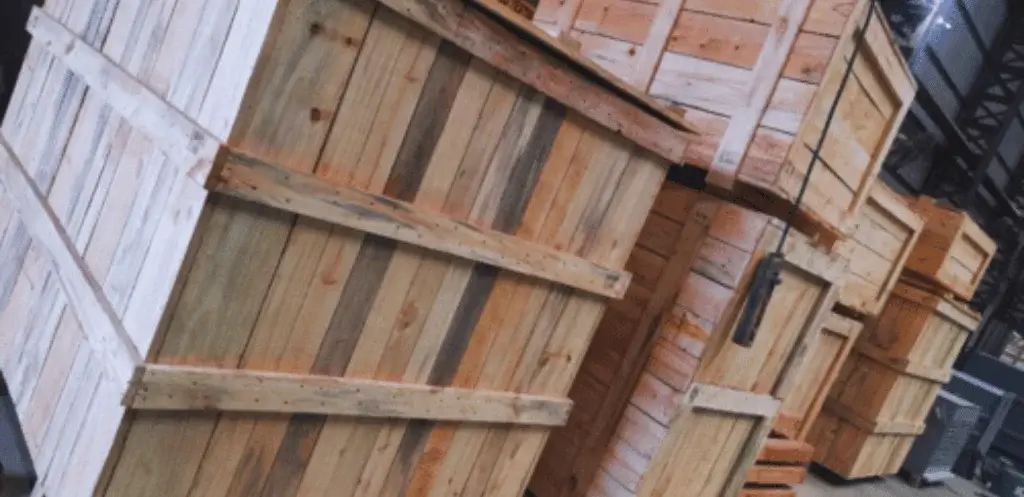
Wooden Box packing is one of the most used packings in export/import consignment durability and versatility. They are mainly made of high-quality of wood such as lumber (timber), plywood, engineered wood, etc. Wooden boxes are used for packing heavy items like machinery, machinery parts, electronics items, and more to keep them safe from damage during transportation.
The versatility of wooden box packing is a various advantages, as these containers can be customized to accommodate specific sizes, ensuring a tailored solution for diverse cargo. Additionally, the use of high-quality wood aligns with international standards and regulations, meeting the stringent requirements of cross-border shipments.
Wooden box packing is a cornerstone of logistics strategies, combining the natural strength of quality wood with adaptability to safeguard heavy and valuable items, contributing to the efficiency and reliability of the global supply chain.
Note: As Per International Standards of Phytosanitary Measures No. 15 (ISPM 15) wooden packing must be fumigated under ISPM 15 and get a fumigation certificate from an authorized fumigation agency.
4. Wooden Crates
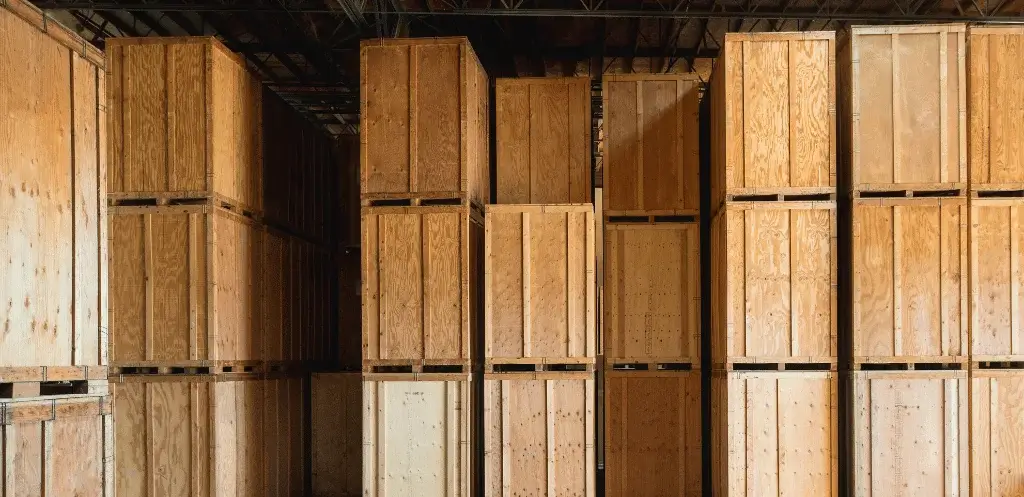
Wooden crate packing is a popular choice for shipping and exporting goods because they are easy to move and protects the goods from damage. They are also resistant to dust, humidity, pressure, and impact. For making wooden crates use these types of wood like Red oak, Birch, Cherry, Maple, Ask beach, Yellow birch, Elm.
The International Standards for Phytosanitary Measures No. 15 (ISPM 15) regulation for wood packaging has been adopted by more than 85 countries.
Note: As Per International Standards of Phytosanitary Measures No. 15 (ISPM 15) wooden packing must be fumigated under ISPM-15 and get a fumigation certificate from an authorized fumigation agency.
5. Steel Drum
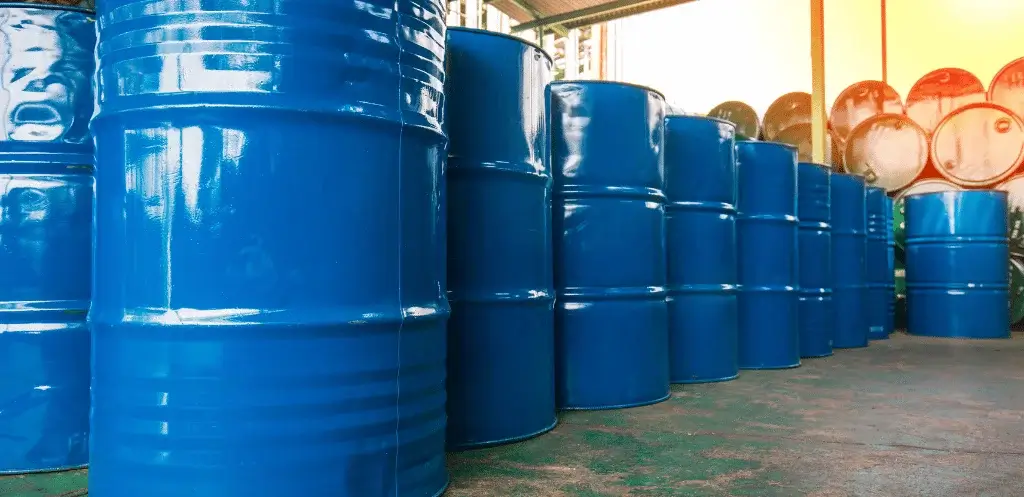
Steel drum packing involves the utilization of steel drums or barrels as containers for the storage and transportation of various materials. Constructed from steel sheets, these drums are typically cylindrical, with capacities ranging from 55 to 110 gallons. Widely employed across industries, steel drums are especially prevalent in the chemical sector for transporting hazardous substances, as well as in the petroleum industry for oil and lubricants. Their robust construction, often featuring secure sealing mechanisms, ensures durability and prevents leaks. Additionally, steel drums find applications in the food and beverage industry for bulk transport of liquids and powders, and in waste management for the collection and disposal of materials. Their durability, security features, and recyclability make them a preferred choice. Compliance with regulations governing the transport of hazardous materials is essential, and steel drums are often recycled after use, contributing to resource conservation and environmental sustainability.
6. Bales

Bales are tightly bound and compressed bundles of material, often held together with twine, wire, strapping, or other binding materials. The term “bales” is commonly associated with agricultural products, textiles, and recyclable materials. The use of baling serves several purposes:
- Agricultural Products:
- In agriculture, crops such as hay, straw, or cotton are often baled for ease of handling, storage, and transportation. Baling prevents these materials from scattering, reduces storage space requirements, and facilitates efficient loading onto trucks for transport.
- Textiles:
- The textile industry frequently employs baling to compact and package fabrics, clothing, or other textile products. This is especially common in the shipping and storage of bulk quantities of textiles, streamlining logistics and protecting the materials.
- Recyclable Materials:
- Baling is extensively used in recycling facilities to compact and bundle materials such as paper, cardboard, plastics, and metal. Compact bales are easier to handle, transport, and store, contributing to more efficient recycling processes and reducing the volume of materials in landfills.
- Waste Management:
- Baling is also employed in waste management to compress and package various types of waste, including municipal solid waste. This helps optimize space in landfills and facilitates transportation to waste disposal sites.
- Synthetic Materials:
- Some industries use baling for synthetic materials like foam or rubber, where compression is beneficial for storage and transport efficiency.
The use of bales offers several advantages, including easier handling, reduced storage space requirements, and improved transport efficiency. Baling materials also often contribute to better organization and cleanliness in various industries. However, it’s important to consider the specific characteristics of the materials being baled and the intended use, as certain materials may require specialized baling techniques or equipment.
7. Palletizing Cargo
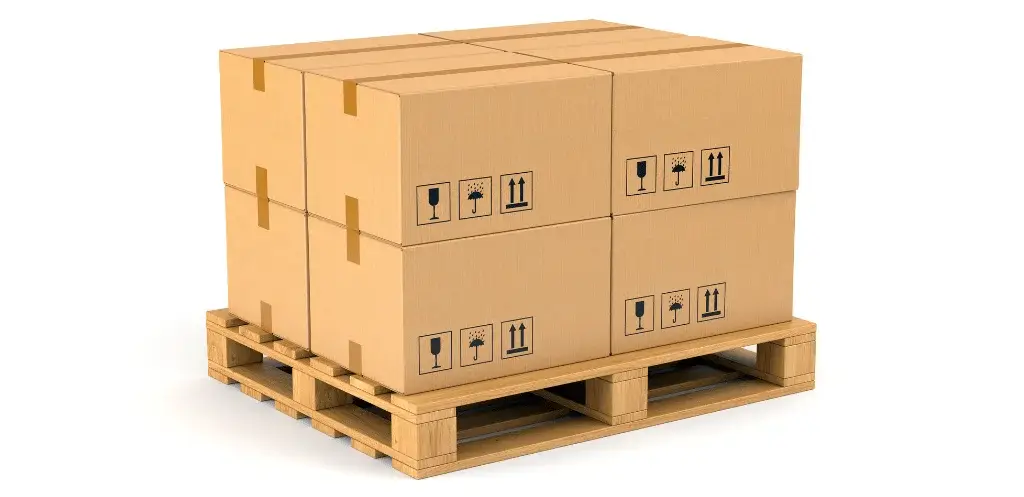
Palletizing cargo is a process crucial to optimizing the handling, storage, and transportation of goods across various industries. It involves arranging and securing items on a pallet, providing a stable and organized unit for efficient material handling. This practice streamlines the movement of goods within warehouses and distribution centers, enhancing the capabilities of forklifts and other handling equipment. Additionally, palletized cargo facilitates space optimization in storage facilities by allowing uniform stacking, making better use of vertical storage space. The standardized dimensions of pallets also align with the requirements of trucks, containers, and shipping processes, ensuring compatibility and maximizing transportation efficiency. Palletizing is particularly beneficial for inventory management, offering traceability through labeling or barcoding. Moreover, it contributes to damage prevention during handling and transport by securely bundling items. As automation becomes more prevalent in modern warehouses, palletized cargo proves adaptable to robotic palletizers and other automated systems, further enhancing overall operational efficiency.
Pallet sizes can vary between countries and regions, and there is no universal standard size for pallets. Different industries and countries have established their own standard pallet dimensions based on their specific needs and requirements. However, some sizes are more commonly used and recognized in certain regions. Here are the standard pallet sizes for a few countries:
- United States:
- The standard pallet size in the United States is 48 inches by 40 inches (121.92 cm by 101.6 cm). This size is widely used in industries such as retail and grocery.
- Europe:
- The most common pallet size in Europe is 1200 mm by 800 mm (47.24 inches by 31.5 inches). This size is known as the Euro pallet and is widely used for transporting goods within Europe.
- Asia:
- In Asia, pallet sizes can vary, but a commonly used size is 1100 mm by 1100 mm (43.3 inches by 43.3 inches).
- Australia:
- In Australia, pallets often follow the standard size of 1165 mm by 1165 mm (45.9 inches by 45.9 inches), which is known as the Australian standard pallet.
It’s important to note that these dimensions represent common sizes, but variations exist within each country, and industries may use different sizes based on their specific requirements. Additionally, there are industry-specific pallet sizes for various applications, such as for air freight, where smaller pallets are often used to fit into aircraft cargo holds.
When dealing with palletized goods and shipments, it’s crucial to be aware of the specific pallet size standards in the relevant region or industry to ensure compatibility with handling equipment, storage systems, and transportation modes.
8. Container

These containers are typically large, rectangular steel boxes that come in various sizes, with the most common being 20 feet and 40 feet in length. The use of containers in international trade has become a fundamental aspect of modern shipping and logistics. Here are key aspects of containers and their use in exports:
- Standardization: Containers are standardized in terms of size and design, allowing them to be easily transferred between different modes of transportation, such as ships, trucks, and trains. This standardization facilitates efficient handling and transportation across various stages of the supply chain.
- Types of Containers:
- Dry Containers: These are standard containers used for the transportation of general cargo. They are sealed and protect goods from the elements.
- Refrigerated Containers (Reefers): Equipped with temperature control, reefers are used for transporting perishable goods that require a controlled environment.
- Open-Top Containers: These have an open top covered with a removable tarpaulin, allowing for the transport of oversized or heavy goods.
- Flat Rack Containers: Designed for heavy or oversized cargo, flat racks have collapsible sides to facilitate loading and unloading.
- Benefits:
- Security: Containers provide a secure and sealed environment, reducing the risk of theft, damage, and tampering during transit.
- Efficiency: The use of containers streamlines loading and unloading processes, minimizing the time spent in ports and transportation hubs.
- Intermodal Transport: Containers can seamlessly transition between different modes of transportation without the need to unload and reload the cargo, promoting intermodal efficiency.
- Documentation:
- Containers are associated with standardized documentation, including the use of a unique container number. This simplifies tracking and documentation throughout the shipping process.
- Global Trade:
- Containers play a crucial role in facilitating global trade by enabling the efficient movement of goods between countries and continents.
- Packaging and Loading:
- Goods are typically packed into containers at the point of origin. Proper packaging ensures the safety of the goods during transportation.
In summary, containers are a cornerstone of modern international trade, providing a secure and efficient means of transporting goods across the globe. The use of containers has significantly contributed to the globalization of trade and the development of efficient supply chain practices.
9. Seaworthy Packing
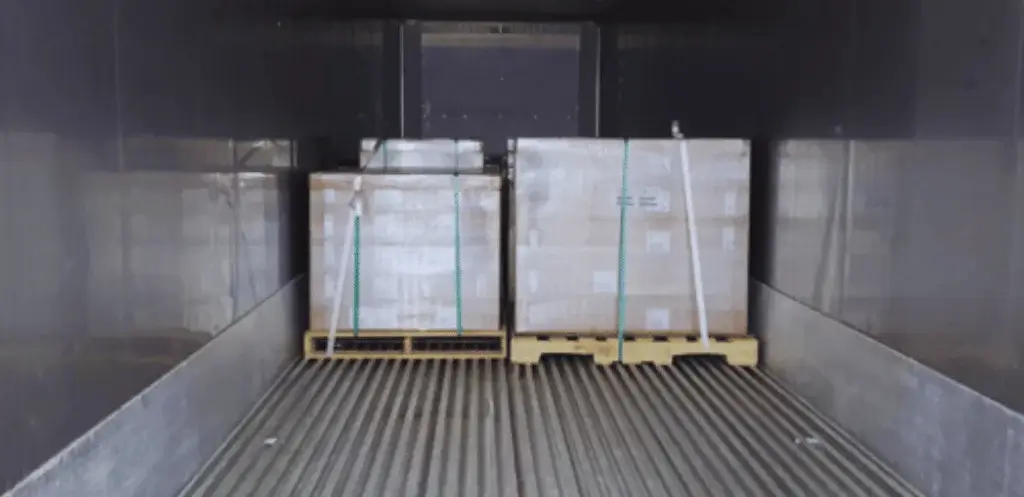
Seaworthy packing refers to the packaging of goods in a manner that ensures they are adequately protected during transportation by sea. This includes protection against moisture, salt air, and the various stresses encountered during sea transport, such as vibrations and movements. Seaworthy packing is essential to prevent damage to goods and ensure that they arrive at their destination in the same condition as when they were shipped.
10. Cargo Safety Net, Lashing & Choking
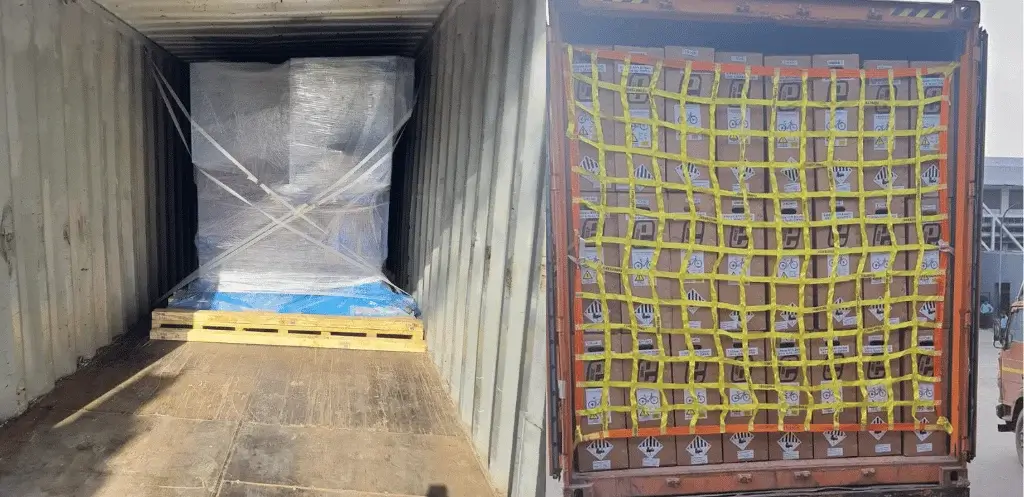
Cargo safety netting, lashing, and choking are practices and equipment used in the context of securing and stabilizing cargo for export. These measures are essential to ensure the safety of goods during transportation, particularly on ships where the cargo may be subjected to the movement of waves and rough sea conditions. Here’s an overview of each:
- Cargo Safety Net:
- A cargo safety net is a netting system designed to prevent cargo from falling off a vessel during transport. It is particularly crucial for goods that are stacked on open decks of ships. Safety nets are often used in conjunction with other securing methods to create a barrier that contains and protects the cargo. These nets are made from durable materials and are designed to withstand the forces encountered at sea.
- Lashing:
- Lashing involves the use of straps, chains, wires, or other securing devices to fasten cargo to the ship’s structure or to other cargo units. The primary purpose of lashing is to prevent the cargo from shifting, sliding, or tipping over during transportation. Different types of lashings are used depending on the nature of the cargo and the specific requirements of the shipping vessel. Properly applied lashings enhance the stability of the cargo and reduce the risk of damage.
- Choking:
- Choking is a method of securing cargo using ropes or straps by creating a loop around the cargo. The ropes or straps are then tightened to secure the cargo in place. Choking is often used for individual items or smaller units of cargo that need to be immobilized. It is a versatile method that can be applied to various types of cargo.
These practices are critical for maintaining the integrity of the cargo and ensuring the safety of the vessel and its crew during sea transport. Failure to properly secure cargo can lead to accidents, damage to goods, and even pose a threat to the safety of the ship and its crew. Compliance with international regulations and industry standards regarding cargo securing is essential, and shipping companies must adhere to these guidelines to minimize risks associated with improper cargo stowage.
It’s important to note that the specific methods and equipment used for cargo safety netting, lashing, and choking may vary based on the type of cargo, the vessel, and the applicable regulations. Shippers and exporters should work in accordance with industry best practices and international shipping standards to ensure the safe and secure transport of goods.Top of Form
11. Aluminium Foil Vacuum Packing
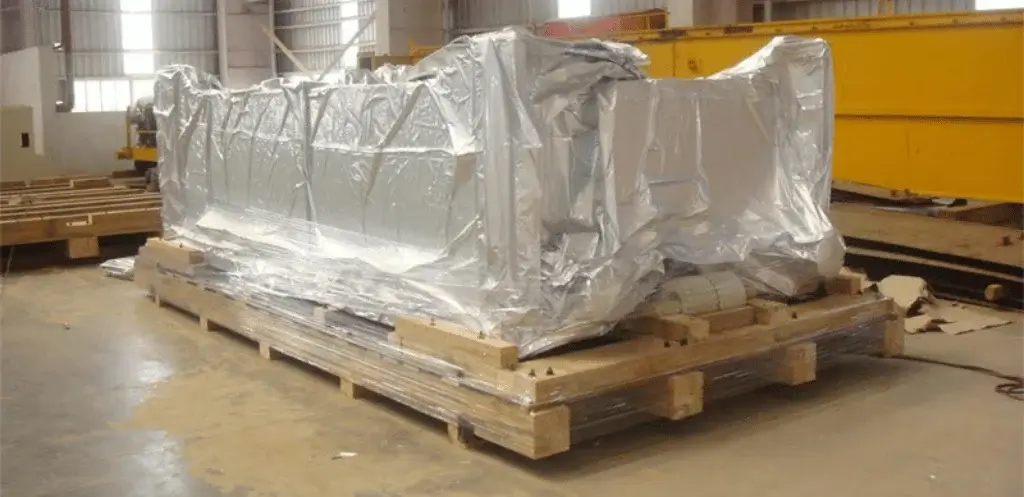
Aluminum foil vacuum packing is a preservation and packaging method employed for export, particularly for perishable goods. By removing air from the packaging and sealing it with aluminum foil, this technique inhibits the growth of microorganisms, extending the shelf life of products and maintaining their freshness. The aluminum foil acts as a protective barrier against light, oxygen, moisture, and contaminants, safeguarding goods from environmental factors during transportation. Widely used for food items, this method is also applicable to non-food products, including electronics and pharmaceuticals. The vacuum sealing process reduces volume, optimizing storage space during transit. For exporters, aluminum foil vacuum packing is advantageous when shipping goods over long distances, ensuring that products reach their destination in optimal condition. Compliance with relevant regulations and consideration of the specific characteristics of the goods are crucial in implementing this packaging method for export.
12. VCI(Volatile Corrosion Inhibitors) Packing
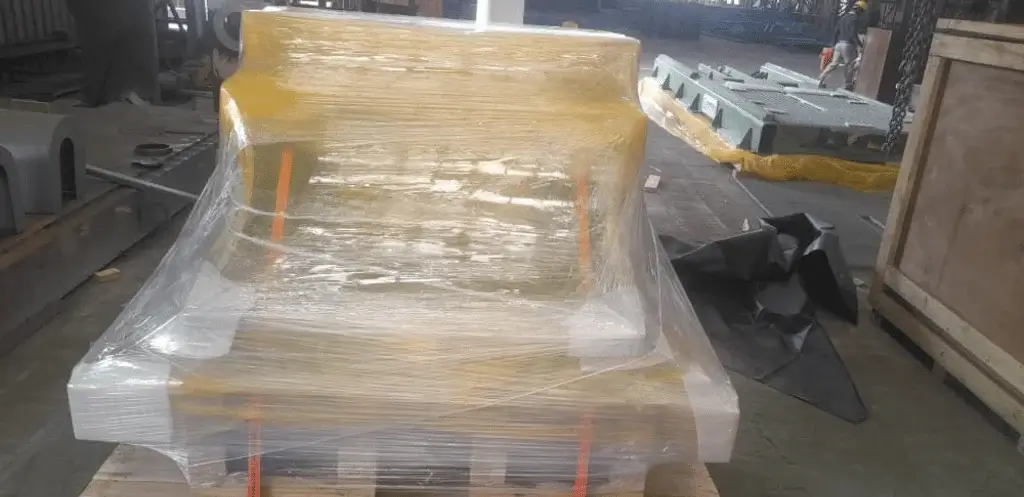
VCI packing, utilizing Volatile Corrosion Inhibitors, is a protective method crucial for safeguarding metal goods during export. This approach involves materials such as papers, films, and bags treated with corrosion-inhibiting compounds that release vapors forming a protective layer on metal surfaces. The primary goal is to prevent corrosion by creating a barrier against moisture, oxygen, and other corrosive elements. Known for its ease of application, VCI packing is versatile and applicable to various metal products, providing long-term protection during storage and transportation. Particularly useful in export scenarios where goods may encounter diverse climatic conditions, VCI packing ensures that metal items reach their destination without corrosion damage. Additionally, its reusability and recyclability contribute to sustainable packaging practices. Compliance with relevant regulations is crucial when implementing VCI packing for export to ensure the safe and permissible use of corrosion inhibitors on metal products.
III. Factors Influencing Choice of Cargo Packaging
A. Nature of Cargo
Understanding the nature of the cargo is crucial in determining the appropriate packaging. Fragile items demand extra care, while hazardous materials require specialized containers with safety features.
B. Transportation Mode
Different transportation modes have varying requirements for cargo packaging. Land, sea, and air transportation each present unique challenges that must be considered in the packaging selection process.
C. Regulatory Compliance
Adherence to international standards and local regulations is paramount. Packaging must comply with safety and environmental standards to ensure smooth transit without legal complications.
IV. Importance of Secure Transportation

A. Preventing Damage
Improper packaging can lead to damage during transit, resulting in financial losses for businesses. Choosing the right packaging materials and methods is essential in preventing such incidents.
B. Ensuring Safety
Secure transportation goes beyond protecting cargo; it also safeguards people and the environment. Unsafe transportation practices can lead to accidents, putting lives at risk and causing environmental harm.
V. Best Practices in Cargo Packaging
A. Thorough Planning
Before choosing packaging, a thorough assessment of cargo needs is essential. Understanding the size, weight, and fragility of items helps in customizing packaging solutions.
B. Quality Materials
Investing in high-quality packaging materials pays off in the long run. Durable packaging not only protects the cargo but also reflects positively on the brand’s commitment to quality.
C. Proper Labeling
Clear and accurate labeling is crucial for efficient transit. Proper labeling ensures that packages are handled correctly and complies with shipping regulations, reducing the risk of delays or complications.
VI. Conclusion
In conclusion, the world of cargo packaging offers a diverse range of solutions to meet the demands of secure transportation. Each type of packaging serves a specific purpose, addressing the unique challenges posed by different types of cargo and transportation modes. As businesses continue to expand globally, the importance of choosing the right cargo packaging cannot be overstated.
Are you ready to elevate your cargo packaging game and ensure secure transportation for your goods? Explore the options mentioned above and tailor your approach to the specific needs of your cargo.
FAQs
1. Can I use standard cartons for heavy items?
Yes, standard cartons are versatile and can be used for heavy items. However, for extra protection, consider wooden crates for added sturdiness.
2. Are temperature-controlled packages only for perishables?
While commonly used for perishable items, temperature-controlled packaging is also suitable for goods that require a specific temperature range for preservation.
3. What regulations should I consider for international shipping?
International shipping requires compliance with various regulations, including customs, safety, and environmental standards. Research and adhere to these regulations to avoid complications.
4. How can I ensure proper labeling of packages?
Ensure proper labeling by providing clear information about the contents, handling instructions, and compliance with shipping regulations. Use durable labels to withstand transportation conditions.
5. Are there eco-friendly options for cargo packaging?
Yes, several eco-friendly options, such as FIBCs and sustainable materials for standard cartons, can be used for cargo packaging. Consider these options to align with environmental concerns.

